Make no mistake: Iran’s newly-released Palestine Is Not Alone poster contest—an international mix with works not only from Iran but also multiple other countries—is a full-on, state-sponsored propaganda free-for-all that takes place completely outside the arc of influence of Israel and the United States and with open disdain for their political preferences and moral pretensions. That the posters on display are politically provocative should come as no surprise, given that the main object of the artists is to demonstrate their contempt for Israel/Zionism and their fulsome solidarity with the Palestinian cause.
Ironically, I learned of the existence of these posters by viewing some of them in an Anti-Defamation League (ADL) article decrying their existence. The author, David Andrew Weinberg, characterizes the intent of the contest sponsors as “asserting that Palestinians were unfairly forced to pay for European crimes, thus reinforcing the regime’s narrative that the State of Israel is illegitimate.” He further alleges that the contest’s posters are filled with “antisemitic bigotry of all kinds” and adds, “perhaps what makes this dehumanizing propaganda so dangerous is that it also is used to legitimize Iran’s support for terrorism to destroy the Jewish state.”
Amazingly, the ADL then goes on to reproduce the very posters that it condemns as dangerous. How serious can its claims of bigotry be if the ADL promotes on its own website the very posters it claims are dehumanizing and threatening?
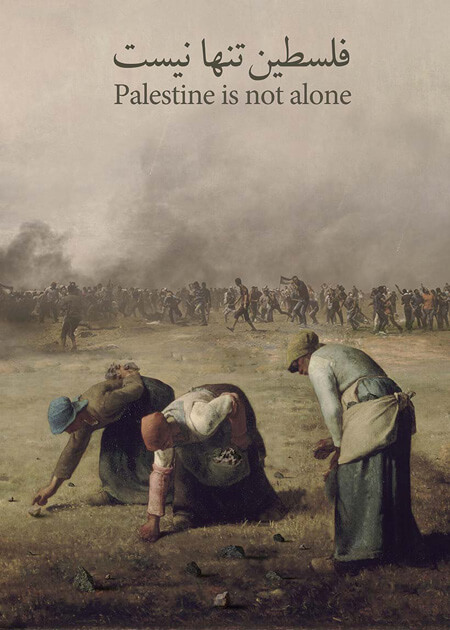
The ADL’s denunciation of this exhibit, and Israel advocacy’s efforts to censor Palestine posters in general, actually results in a counterintuitive, and for the Zionists, counterproductive outcome.
Western media outlets are much more indulgent towards the Israeli and pro-Israel press than they are towards Iranian or Palestinian news sources. So when the ADL, Ha’aretz, the New York Times, or the Jerusalem Post publish an article about Palestine posters, news syndicates and allied media often give wide play to those stories and those posters are, as a result, seen by audiences far larger than Palestine solidarity could ever dream of delivering using only its own media resources.
Many other Israel advocacy groups, for example, Canary Mission and Palestinian Media Watch (PMW), avidly reproduce Palestine posters in their cyber-bullying efforts. Ironically, political Zionism, by virtue of its aggressive surveillance of Palestine-related cultural and political websites and the accommodationist policies of many Western media outlets, is now likely the single most powerful global vehicle for the dissemination of Palestine posters.
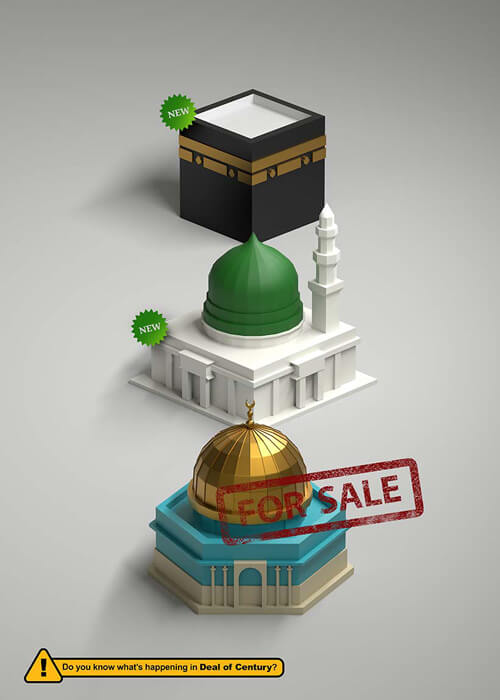
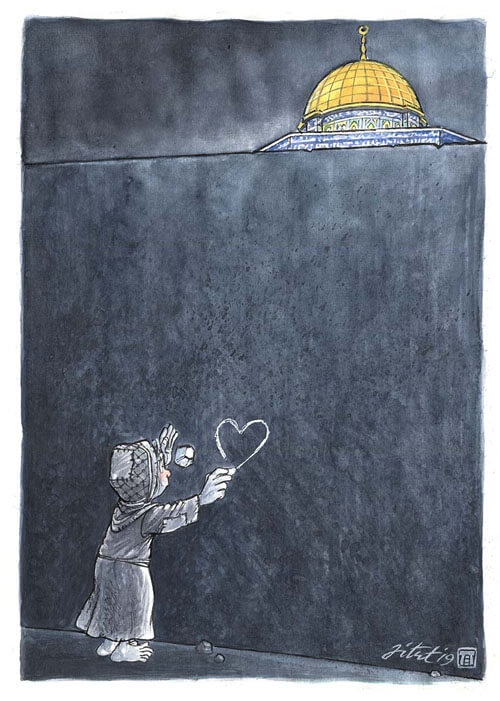
Why do Zionists point bright lights at posters they purportedly prefer no one see? Perhaps they calculate that the insinuation of antisemitism will damage their opponents reputationally more than the graphic power of the Palestine posters will hurt Israel politically? Perhaps they theorize that by reproducing posters that feature lurid or disturbing elements, they can dissuade the public from visiting the hosting site, viewing the entire exhibit, and coming to their own conclusions?
The ADL article offers an important piece of evidence to support the latter thesis: there is no link to the whole Palestine Is Not Alone exhibit. Rather, the author cherry-picked a few posters that he believed qualify under the “illustrative examples” of antisemitism contained in the controversial International Holocaust Remembrance Alliance definition.
The problems with the IHRA definition are too numerous to be unpacked here, but Weinberg’s bias is made clear when he fails to even mention that the vast majority of the posters in the exhibit by no reasonable definition could be categorized as racist. Anti-Israel? Yes. Anti-Zionist? Definitely. Anti-Occupation? Militantly. Anti-USA? Resolutely. Antisemitic? Only according to Israel’s enablers.
One of the classic attributes of effective propaganda is to be selective as to what is criticized and to ignore the larger context: this is exactly what Weinberg’s article does.
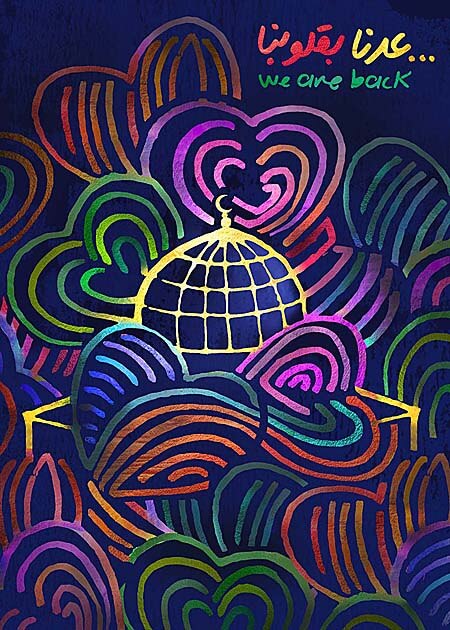
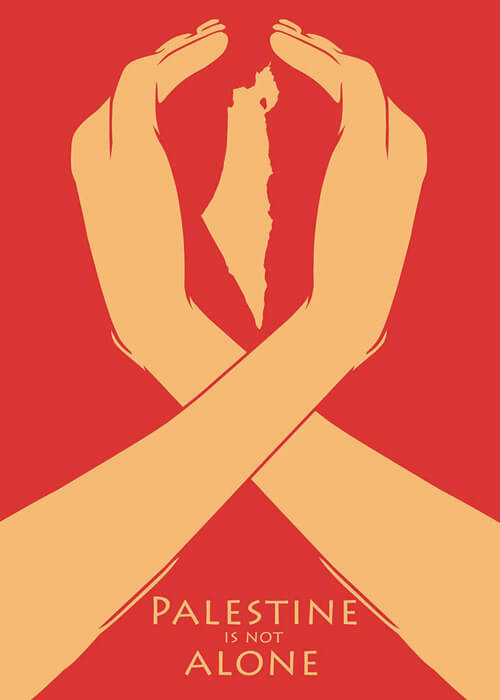
In his sweeping condemnation, he ignores the bulk of the exhibit –there are 220 posters on view and he focuses on five – and in the process squanders the opportunity to engage the public in a teachable moment on the subject of the Zionist-Palestinian conflict.
To be sure, the artists who created these posters are not at all concerned by any reputational threats emanating from Israel advocacy. They are concerned solely with projecting this message: Palestine is not alone. The fact that hundreds of artists from around the world created original posters to promote this idea demonstrates the indifference they have towards Zionism’s opinion of them and their work. Indeed, to be openly denounced by Israel or the United States bestows a sizable grant of revolutionary prestige on progressive and leftist artists, including Israelis and Americans, who stand with Palestine. Many want to be so attacked and consider it an honor, a recognition so to speak, that they stand on the right side of history as they define it. The very fact that Israel advocacy is displeased or scandalized by these posters is seen by the artists as validation of their work’s potency.
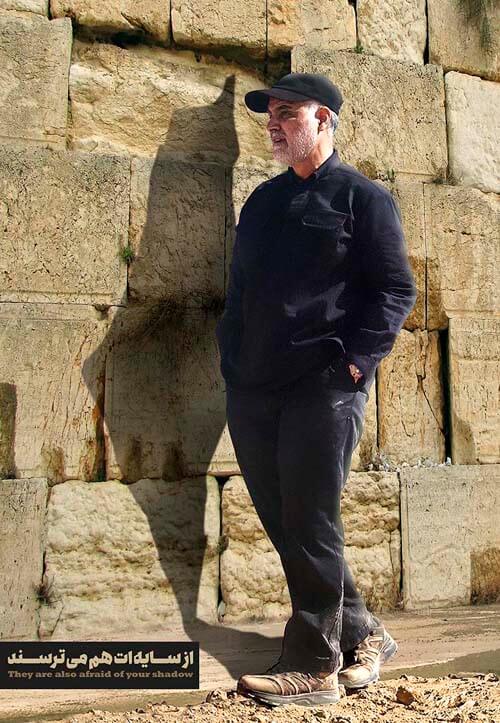
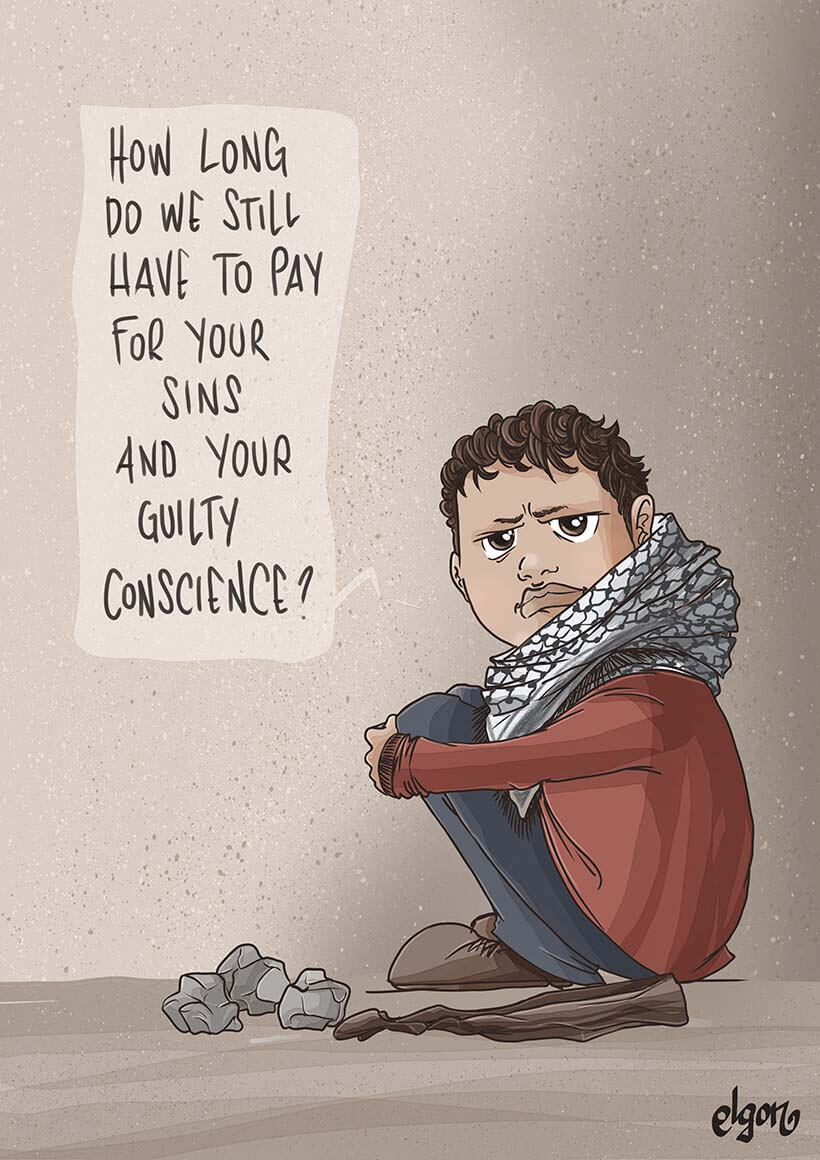
Of course, in any exhibit that deals with Palestine-Israel, there will likely be something to offend someone; however, is that reason enough to censor the whole? Some of the posters are manifestly mediocre, some are naïve, and some are iconographically obscure. A number contain political or religious references indecipherable or near-incomprehensible to Western viewers. Several, such as the ones selected by Weinberg, incorporate iconography that has long been considered anti-Jewish.
It is worth remembering here that Israel advocacy has over the years published more than a few Islamophobic and anti-Palestinian posters which demonstrates, if nothing else, that neither party is entirely undeserving of legitimate criticism.
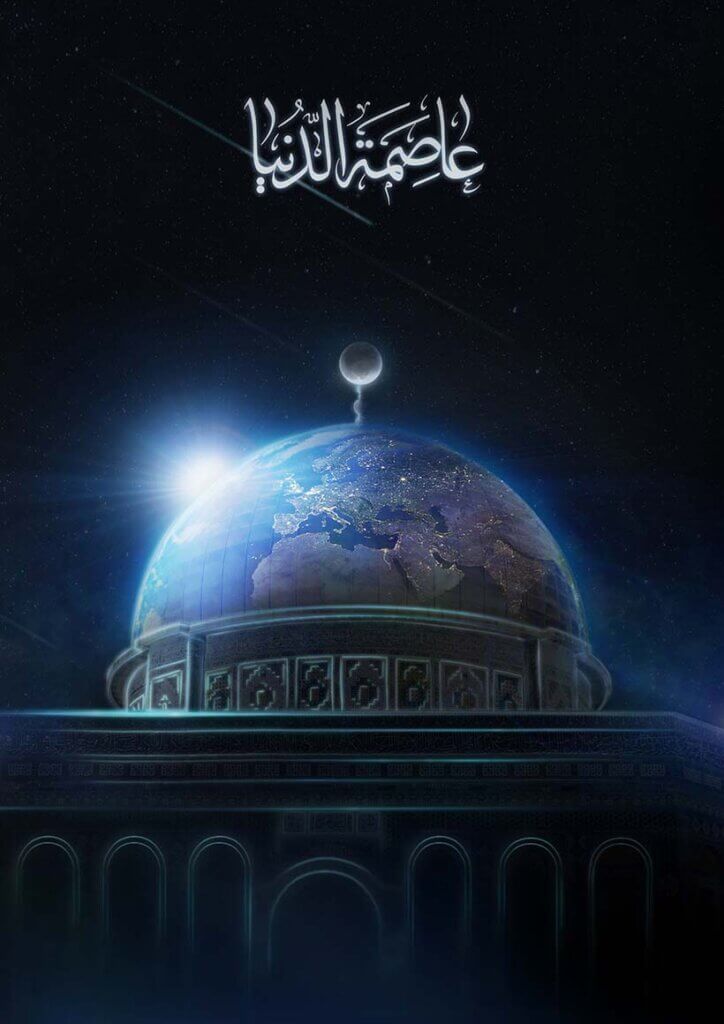
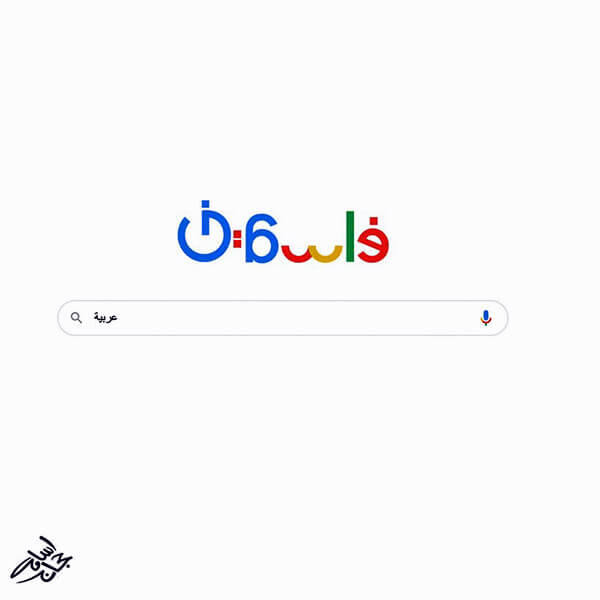
All that being said, it must be noted that many of these Palestine posters are stunningly outspoken, graphically vibrant, iconographically innovative–and not a few–surprisingly poignant. Like them or not the resulting works are all honest and they are all original.
Using a judicial parallel, we might fruitfully employ the “examining the totality of circumstances” test and isolate any disputed images – perhaps with caption cards or by creating a special viewing area – without discrediting the entire exhibit. We should not grant Israel advocacy the power to censor an entire art exhibit because of the inclusion of several posters it finds objectionable, while imperiously reserving for itself the right to reprint those very posters.
Rather, we should be guided by the wisdom of Supreme Court Justice Louis Brandeis, who advised:
“If there be time to expose through discussion the falsehood and fallacies, to avert the evil by the processes of education, the remedy to be applied is more speech, not enforced silence.”
There is time, and we should use it for the discussion of the issues raised in the posters rather than dismissing them outright.
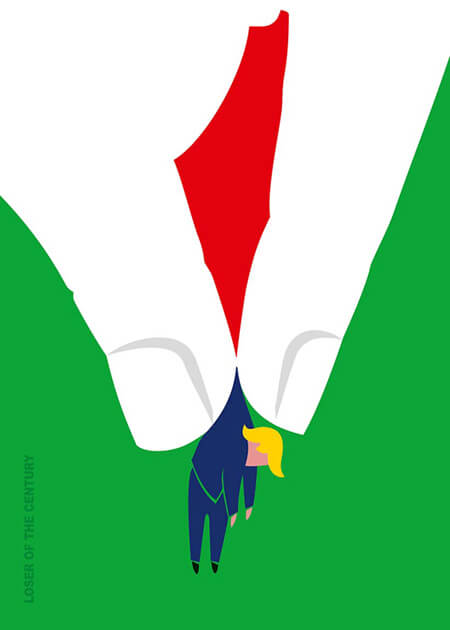
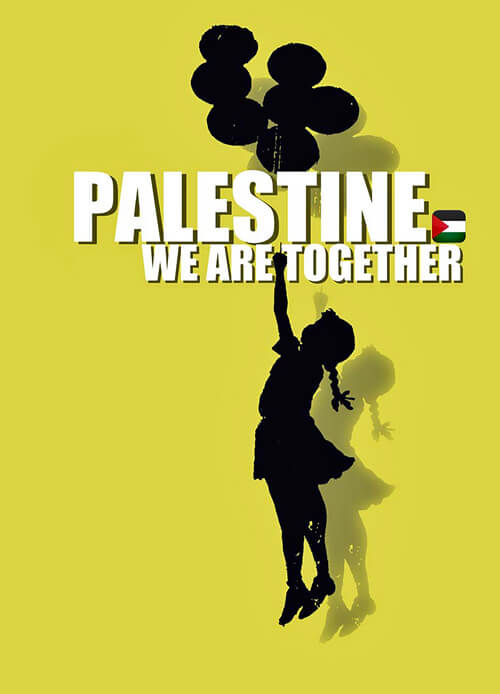
The Palestine Poster Project Archives is an educational site and to that end it does not privilege or censor submissions, nor does it judge posters based on aesthetic considerations. We are archivists: our sole task is to document the history of the Palestine poster. All of it.
In this Special Collection, visitors will be able to view the posters submitted to the Palestine Is Not Alone exhibit, read the translations, view related works by the artists and see what Palestine posters look like when their creators are indifferent to mainstream Western political censorship, taboos and intimidation.
You are invited to view the exhibit and come to your own conclusions.

Dan Walsh
Dan Walsh began collecting Palestine posters while studying Arabic as a Peace Corps volunteer in Morocco in the mid-1970’s. He has a graduate degree in Arab Studies from Georgetown University’s School of Foreign Service and he is the founder and archivist of the Palestine Poster Project Archives.
 RSS Feed
RSS Feed















 March 23rd, 2021
March 23rd, 2021  Awake Goy
Awake Goy  Posted in
Posted in  Tags:
Tags: 













